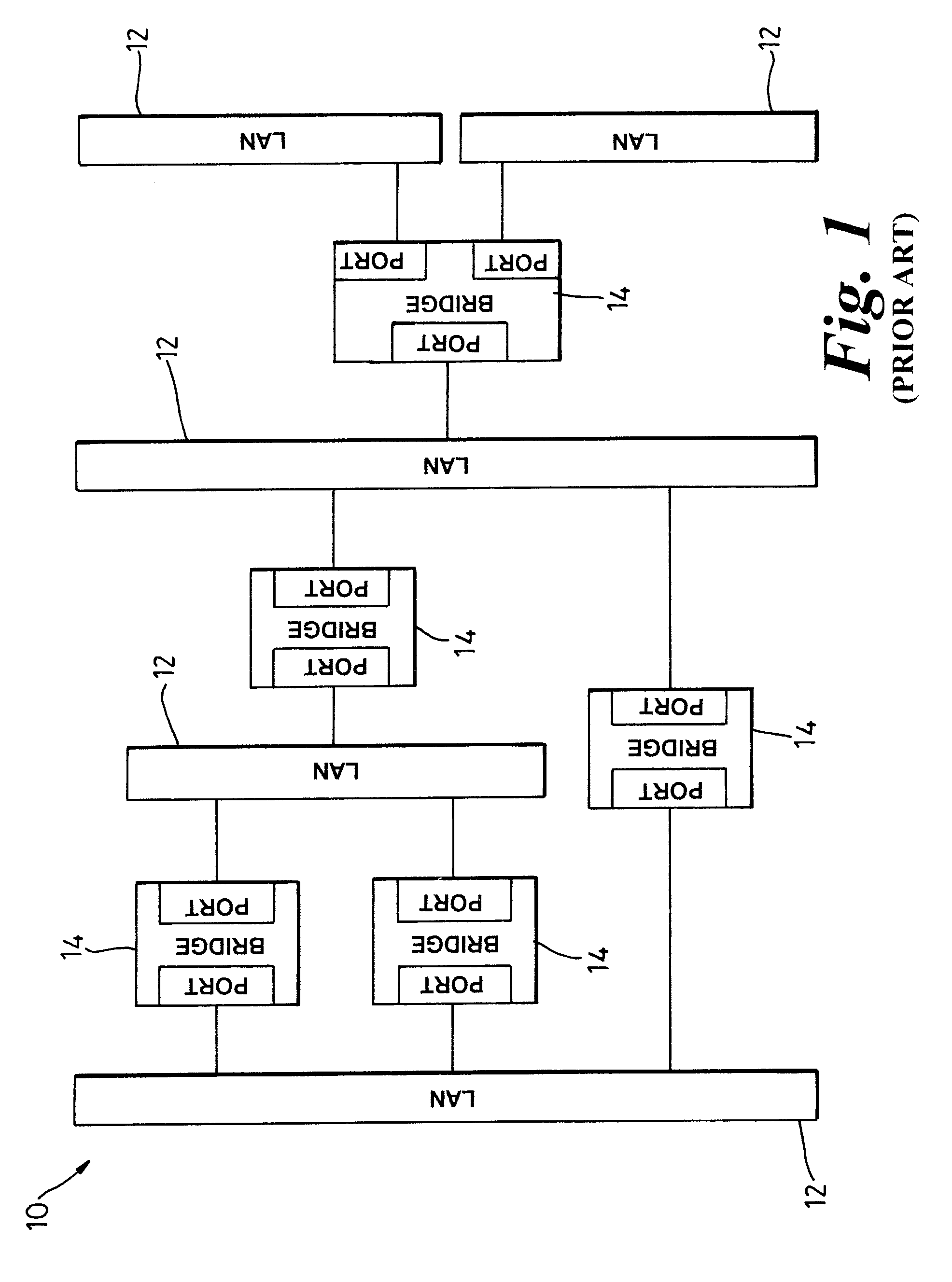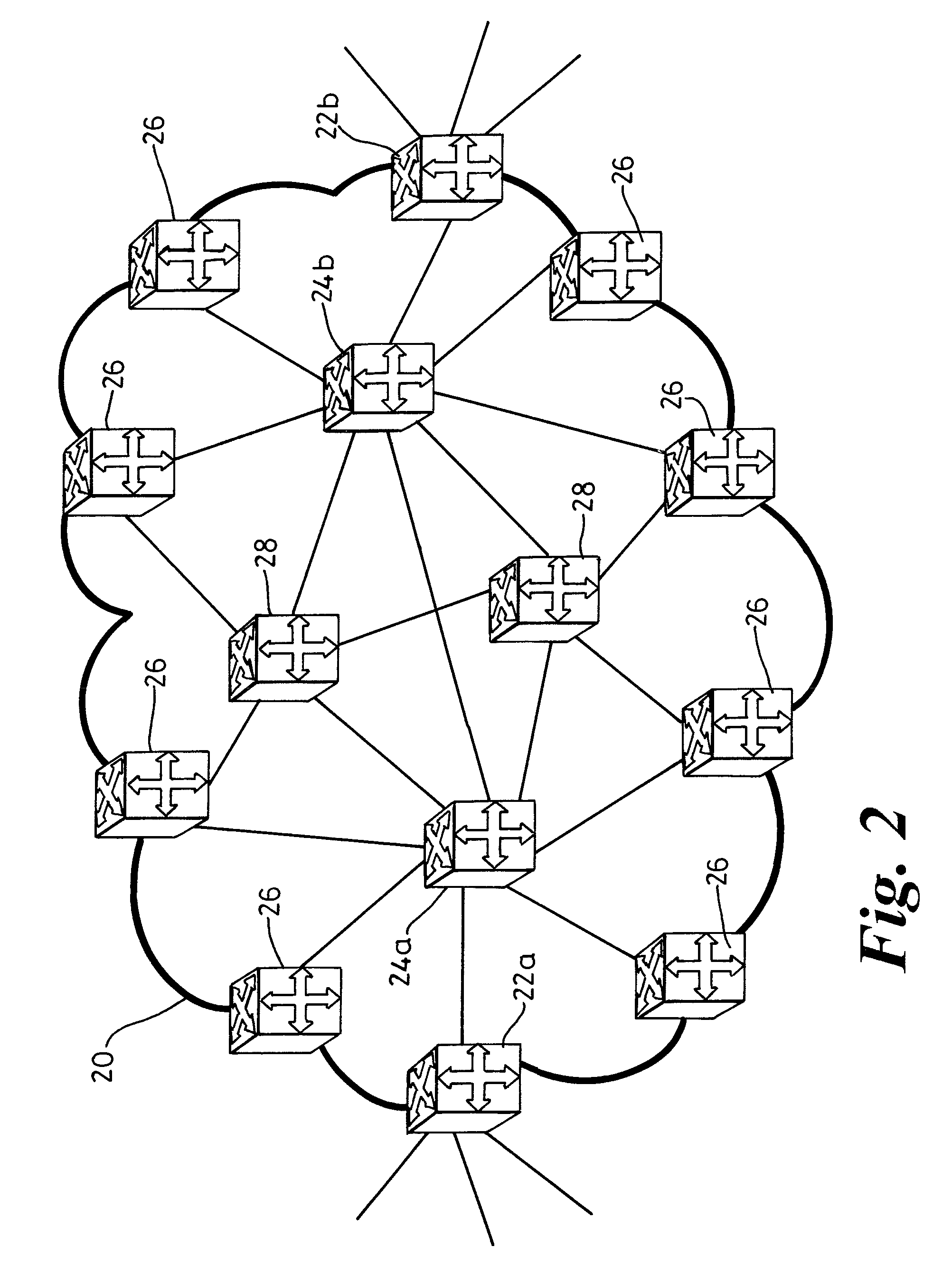Differential forwarding in address-based carrier networks
a carrier network and address-based technology, applied in the field of differential forwarding in address-based carrier networks, can solve the problems of incompatibility of conventional switched ethernet networks with carriers' requirements for providing guaranteed services, inability to meet the requirements of carriers, and unstable and complex standards of mpls
- Summary
- Abstract
- Description
- Claims
- Application Information
AI Technical Summary
Benefits of technology
Problems solved by technology
Method used
Image
Examples
Embodiment Construction
[0057]Embodiments of the present invention are described below by way of example only. These examples represent the best ways of putting the invention into practice that are currently known to the Applicant although they are not the only ways in which this could be achieved.
[0058]To support guaranteed QoS to customers, what is required is:[0059]1) an at least partially meshed carrier network;[0060]2) the ability to establish explicitly routed connections across the carrier network between any two edge nodes (traffic engineering); and[0061]3) the ability to enforce any bandwidth restrictions and / or forwarding rules applied to the connections.
[0062]The present invention is primarily concerned with enabling requirements 1) and 2) above in frame-based networks such as Ethernet networks. Requirement 3) may be achieved for example using conventional mechanisms such as admission control in either or both of the control plane and at the ingress nodes of connections (trusted-edge policing). ...
PUM
 Login to View More
Login to View More Abstract
Description
Claims
Application Information
 Login to View More
Login to View More - R&D
- Intellectual Property
- Life Sciences
- Materials
- Tech Scout
- Unparalleled Data Quality
- Higher Quality Content
- 60% Fewer Hallucinations
Browse by: Latest US Patents, China's latest patents, Technical Efficacy Thesaurus, Application Domain, Technology Topic, Popular Technical Reports.
© 2025 PatSnap. All rights reserved.Legal|Privacy policy|Modern Slavery Act Transparency Statement|Sitemap|About US| Contact US: help@patsnap.com



